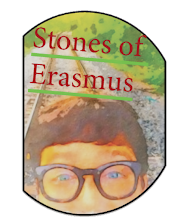I bet you are ready for Spring Break (or maybe it has already started)—especially if you teach middle and high school. I know I am. Whether you are teaching mythology to middle school students in an ELA class, or you are diving into Homer's epics with high school students—the weeks before spring break are an effective time to do something different with all those myths you are reading. Bernard Evslin, in his fantastic book of Greek myth, has a chapter on vocabulary called "When Myth Becomes Language". I have created a slew of resources to connect the murky, enigmatic myths we read with kids to how these stories are part of our everyday life and language. Check it out, and I guarantee your students will appreciate the fresh look (while helping them build academic vocabulary).
 |
| I sell quality humanities-content on TpT. Thank you for supporting Stones of Erasmus. |
Bring Greek Mythology into Everyday Life: Engaging Lessons on How Myth Becomes Language!
Are your students fascinated by Greek myths but wondering how these ancient stories relate to their lives today? Inspired by Bernard Evslin's insightful exploration of myth and language, these classroom-ready resources vividly demonstrate how mythology permeates our everyday vocabulary and expressions.
Perfectly suited for middle school ELA classes or high school students diving into Homer’s epics, this collection offers an exciting shift from traditional teaching—especially ideal for the energizing weeks leading up to Spring Break!
Your students will:
✓ Explore engaging vocabulary activities that directly link mythical stories to modern language.
✓ Discover how common words and expressions originated from the rich tapestry of Greek mythology.
✓ Participate in interactive exercises that build essential academic vocabulary skills aligned with Common Core Standards.
✓ Make meaningful connections between ancient texts and contemporary life, deepening their appreciation and understanding of literature.
 |
| Students love working with these myth-related vocabulary cards. Buy them on the Stones of Erasmus TpT store. |
Classroom-tested and designed for active engagement, these lessons turn mythology into accessible, intriguing, and highly relevant content your students will love. Boost student enthusiasm and vocabulary retention with this dynamic, practical resource set.
Digital Download: Comprehensive, easy-to-use materials guaranteed to add depth and excitement to your ELA and Humanities curriculum.
Free Mythology Resource
Not sure what to teach next? Here's a freebie to get you started. I compiled some of my most popular reading cards from units I have assembled for Stones of Erasmus.

Note to My Readers about Paid Content on Stones of Erasmus
This blog post advertises digital content I make and sell as part of my side hustle on TpT—just like my lovely blog, it is also called Stones of Erasmus! Thanks for supporting me on this humanities-inspired journey.
Let us know what you think by dropping a line support@stonesoferasmus.com. Also, if you like my stuff, write a review. TPT is pretty amazing and they will give you TPT credits for writing a review. And it helps buyers know what they are getting before they click purchase.


